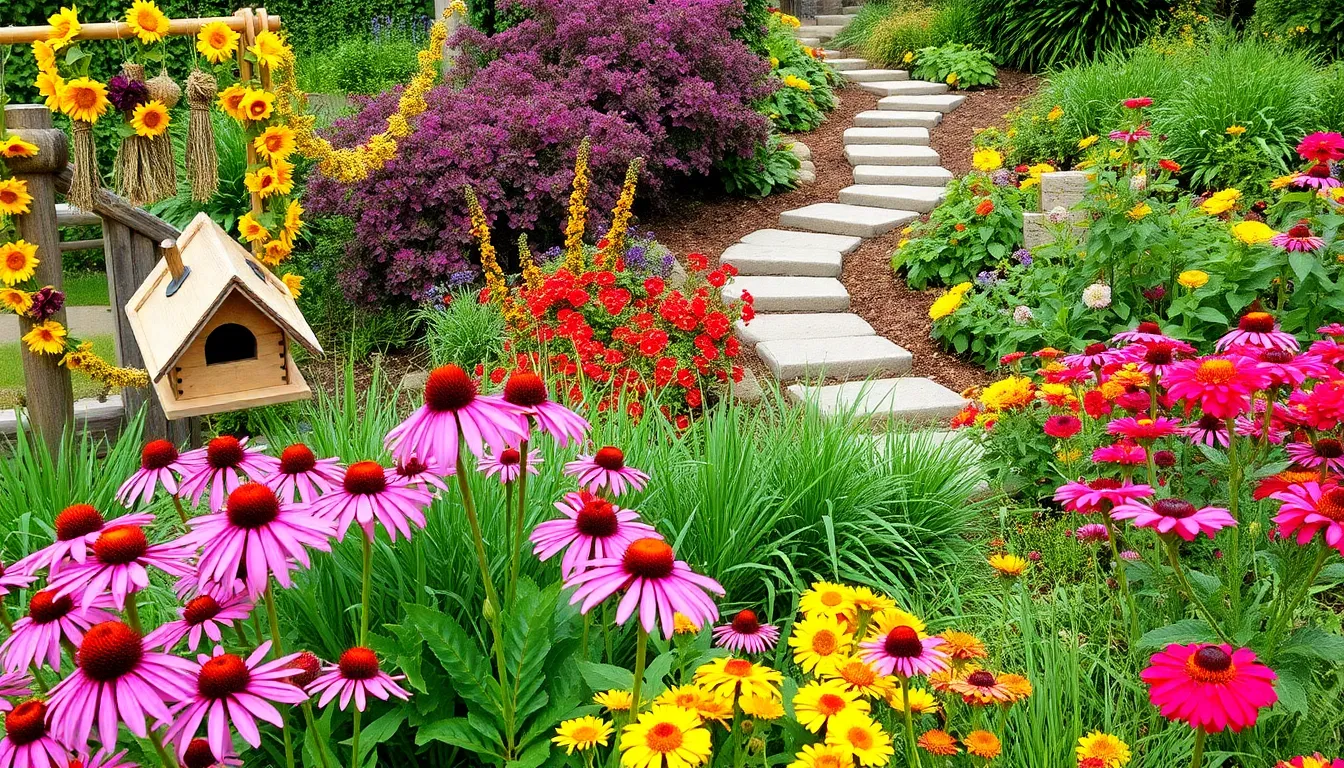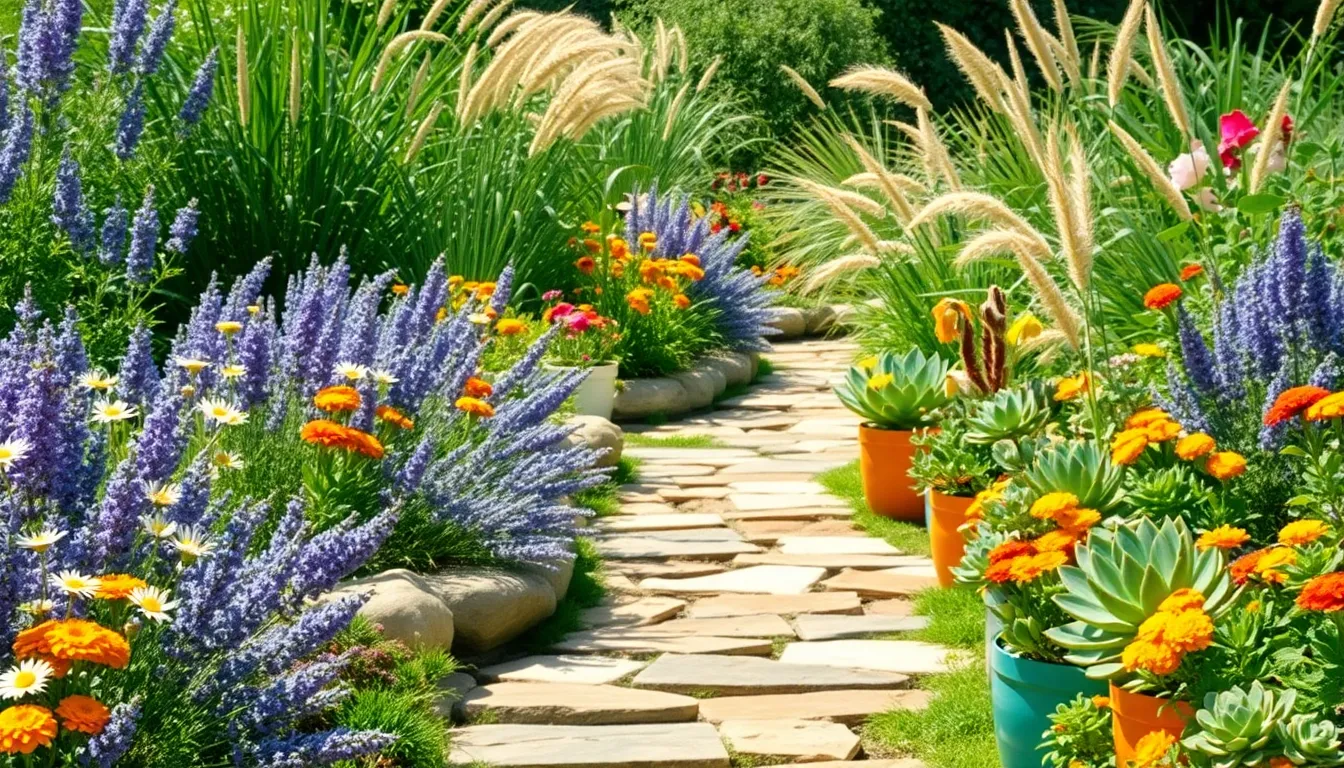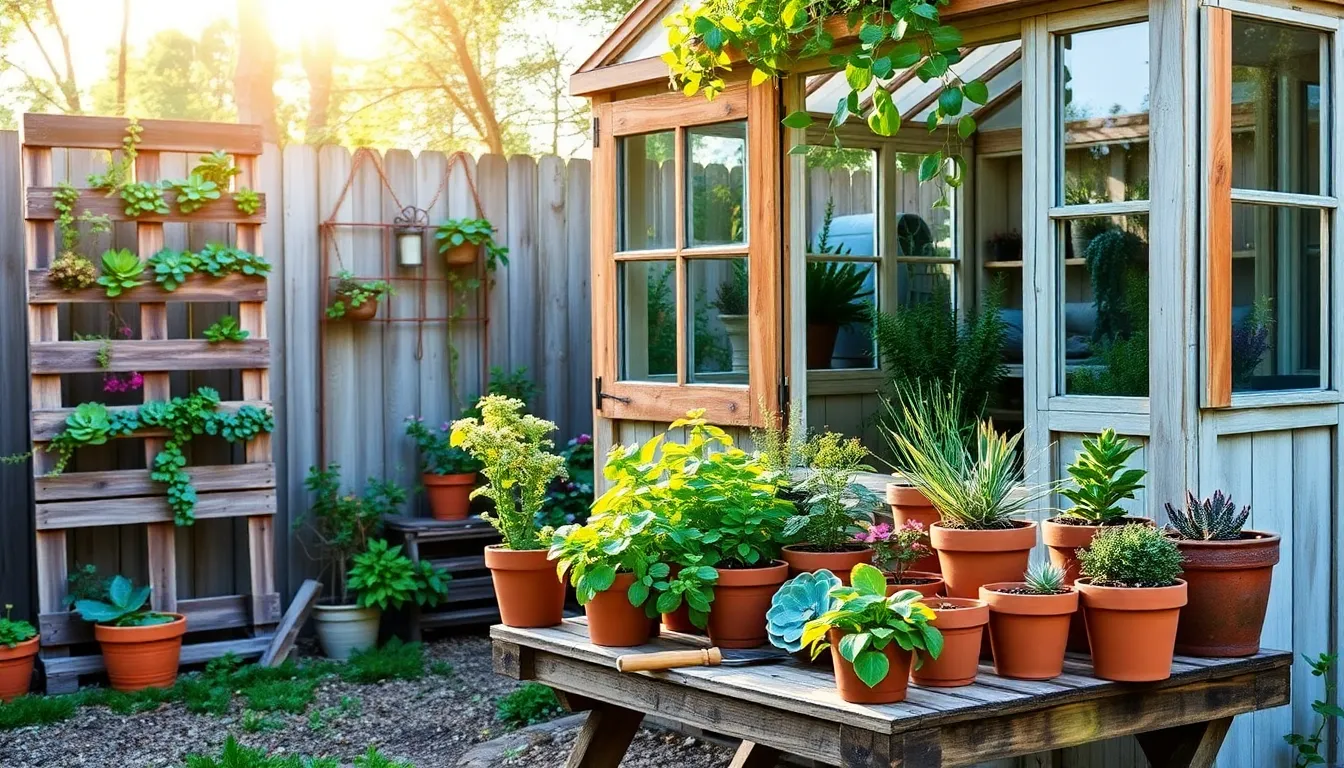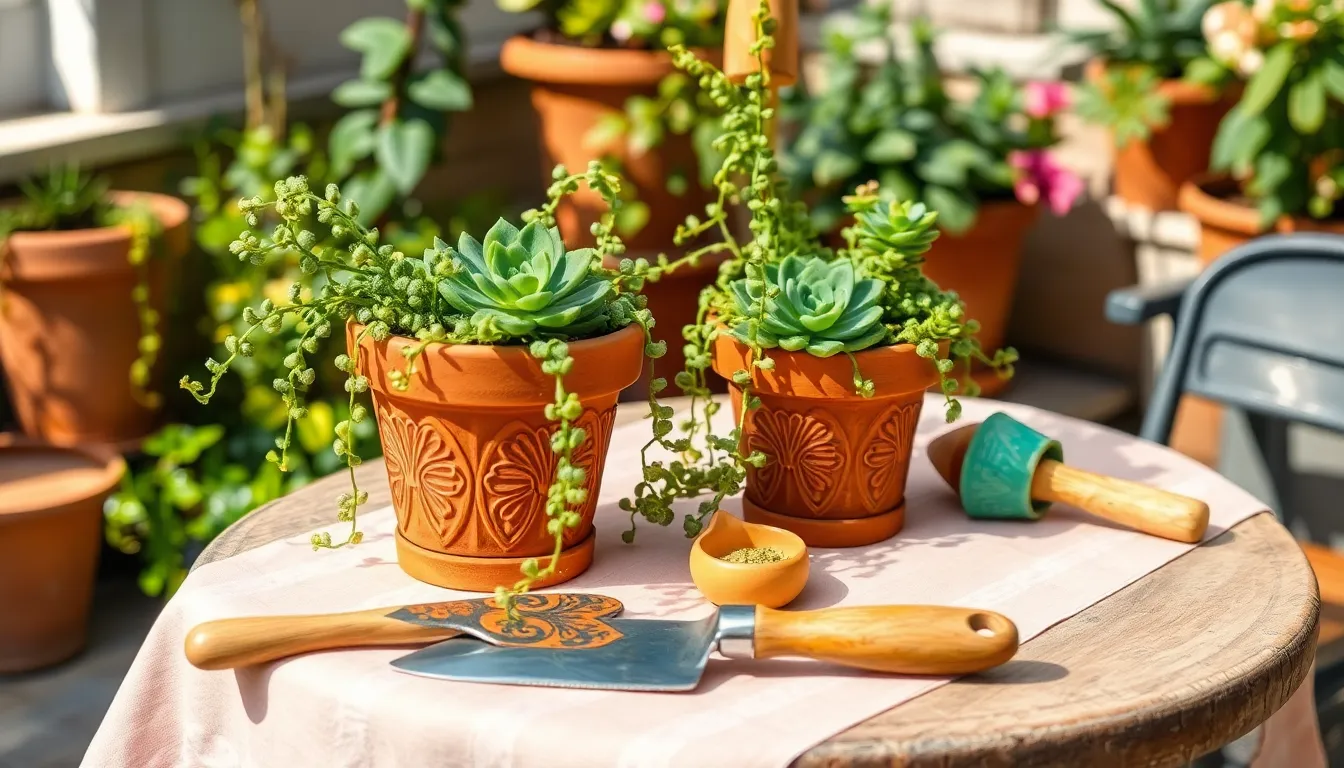Imagine stepping into your garden and being greeted by a symphony of buzzing bees, fluttering butterflies, and the gentle hum of hummingbirds. A pollinator garden is not just a feast for the senses; it’s a vital contributor to the health of our ecosystems and the productivity of our own vegetable patches and flower beds. Whether you’re a novice with a newfound passion or a seasoned gardener seeking fresh inspiration, creating a haven for these essential creatures is a rewarding endeavor that brings life and vibrancy to any outdoor space.
As we journey through “13 Unique Pollinator Garden Setups,” you’ll discover innovative ways to welcome pollinators into your garden, regardless of size or location. From container gardens perfect for urban balconies to sprawling rural landscapes, these setups are designed to inspire and empower you to cultivate a thriving pollinator paradise. Along the way, you’ll learn how to strategically select plants that cater to the needs of various pollinators, ensuring your garden is a buzzing hotspot for biodiversity and beauty.
Each setup offers a unique twist, blending aesthetic appeal with ecological function, and promises to enrich your gardening experience with tangible results. We’ll delve into practical tips that make it easy to integrate these ideas into your existing garden or start from scratch with confidence. Get ready to transform your patch of earth into a lively, colorful refuge that supports the essential work of nature’s pollinators, and watch your garden—and your gardening spirit—flourish like never before.
Understanding Pollinator Needs
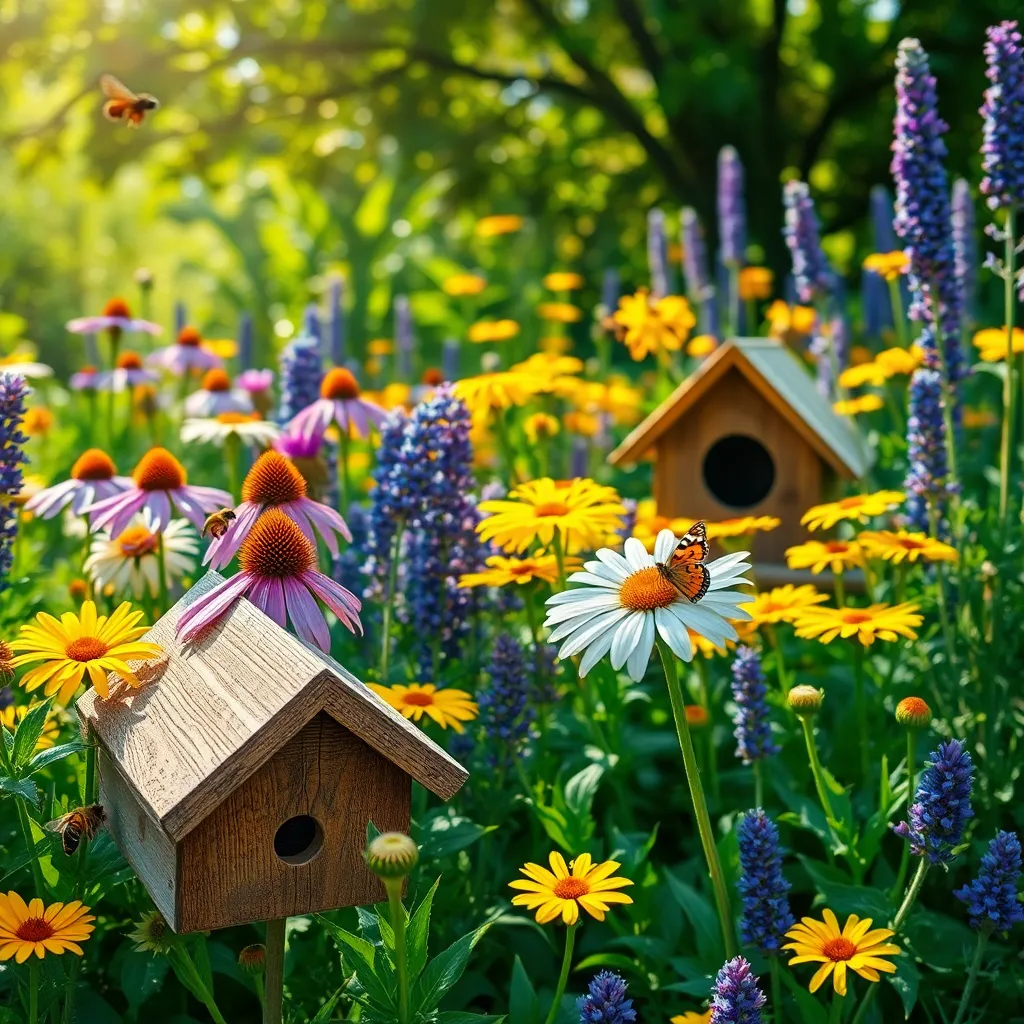
Understanding the needs of pollinators is essential for creating a thriving garden that supports biodiversity. Pollinators such as bees, butterflies, and hummingbirds require a variety of plants that bloom at different times of the year to ensure a continuous food supply.
When designing your pollinator garden, focus on planting a diverse array of flowering plants. Choose native species whenever possible, as they are more likely to attract and support local pollinators.
Ensure that your garden provides both nectar and pollen sources to accommodate different pollinator preferences. Consider planting in clusters to make it easier for pollinators to locate food sources, which can increase their efficiency and activity in your garden.
For a more advanced approach, incorporate a water source in your garden. A shallow dish filled with water and rocks can provide a safe drinking area for small pollinators like bees and butterflies.
Choosing Native Plant Varieties
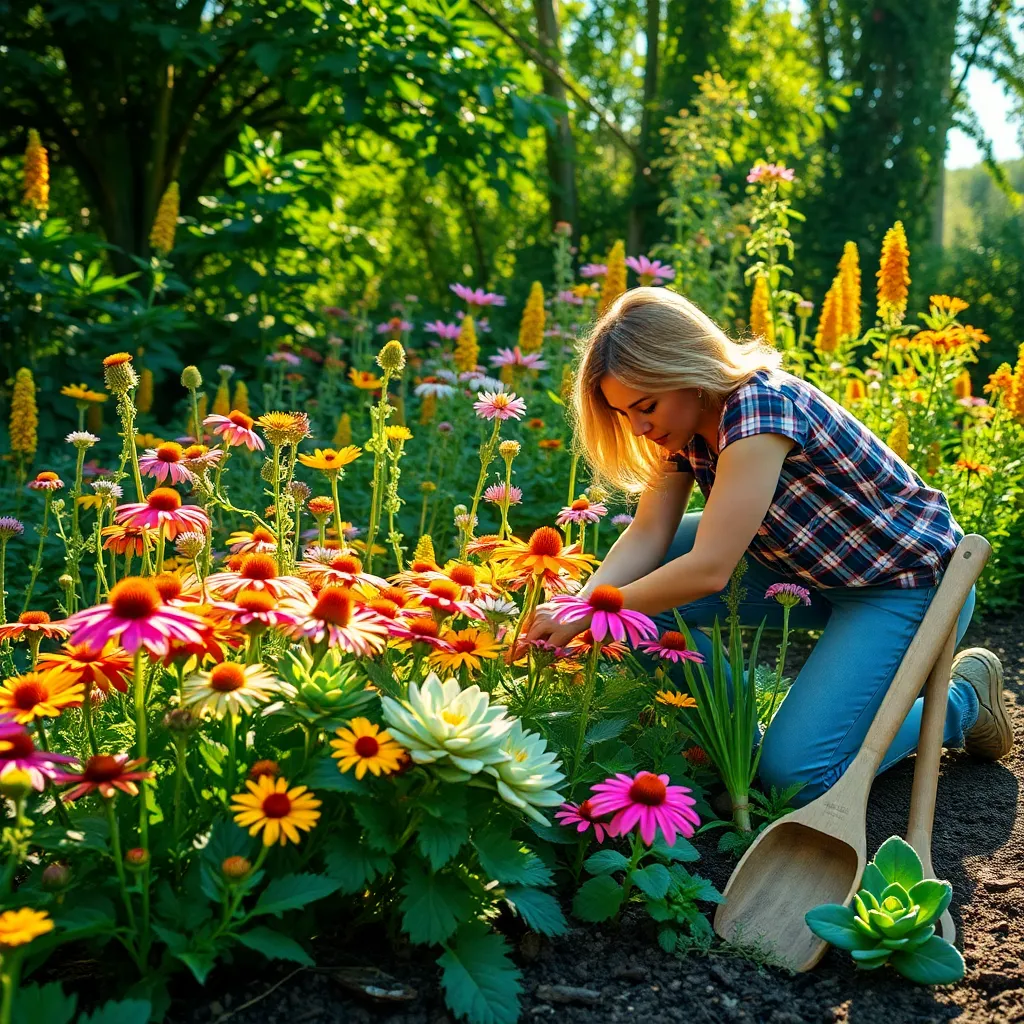
Choosing native plant varieties is a key strategy for creating a thriving pollinator garden. Native plants are adapted to the local climate, soil, and ecosystem, making them low-maintenance and beneficial for pollinators.
When selecting native plants, consider their bloom times to provide a continuous food source throughout the growing season. Early blooming plants like columbine can kickstart your garden, while late bloomers such as goldenrod maintain interest and nourishment well into fall.
Soil type is another critical factor when choosing native plants. Well-draining soil is essential for most native species; you can improve drainage by adding organic matter like compost or leaf mold.
Advanced gardeners can experiment with layering native plants by height to mimic natural habitats. This technique not only enhances the garden’s aesthetic appeal but also better supports diverse pollinator species.
Incorporate a mix of perennials and annuals to ensure your garden remains vibrant from year to year. Perennials such as milkweed are a staple for monarch butterflies, while annuals like cosmos quickly attract bees and hummingbirds.
Creating a Butterfly Haven

Transforming your garden into a butterfly haven starts with choosing the right plants. Opt for nectar-rich flowers like milkweed, coneflowers, and asters, which are favorites among many butterfly species.
It’s crucial to provide a continuous bloom throughout the seasons. This ensures that butterflies will have a steady food source, so plan your garden with a mix of plants that bloom from early spring to late fall.
For soil conditions, most butterfly-friendly plants prefer well-draining soil. You can enhance your soil by incorporating compost or organic matter to improve drainage and fertility, which helps plants thrive.
Watering is essential, especially in the first few weeks after planting. A deep watering once a week is generally sufficient, but always adjust based on rainfall and temperature to avoid overwatering.
Consider adding a shallow water source like a birdbath with rocks for butterflies to land on. This provides a much-needed hydration spot, especially during hot, dry spells.
Advanced gardeners might introduce host plants like parsley, fennel, or dill to attract caterpillars. These plants serve as food for the larvae, ensuring the next generation of butterflies in your garden.
Designing for Bee Diversity
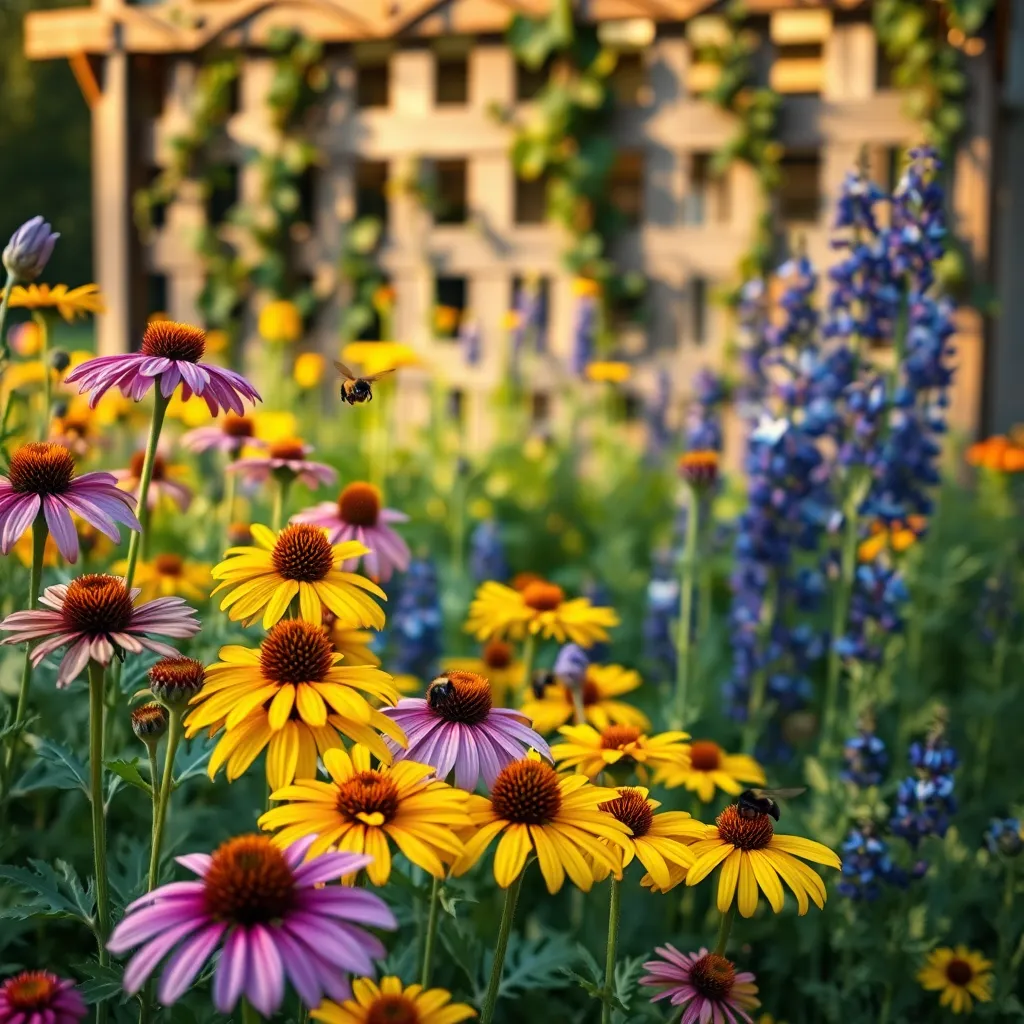
To design a garden that attracts a diverse range of bees, it’s essential to incorporate a variety of plants with different bloom times. This ensures that your garden provides a continuous source of nectar throughout the growing season, supporting bee populations year-round.
Choose a mix of native flowering plants such as coneflowers, black-eyed Susans, and lavender, which are particularly attractive to bees. Native plants are adapted to local climates and soil conditions, making them easier to care for and more resilient to pests and diseases.
When selecting plants, consider their color and shape, as bees are drawn to blue, purple, and yellow flowers with open or tubular shapes. Plant clusters of the same species together to create a more prominent target for foraging bees, enhancing their efficiency while pollinating.
Ensure your garden includes a mix of annuals, perennials, and herbs to provide both diversity and stability in food sources. Regularly deadhead flowers and remove spent blooms to encourage continuous flowering, prolonging the availability of nectar and pollen.
Advanced gardeners can experiment by incorporating water features or shallow dishes with pebbles to provide bees with a safe drinking spot. Maintaining a pesticide-free garden is crucial, as chemicals can harm bees; instead, focus on natural pest control methods like companion planting.
Attracting Hummingbirds Naturally
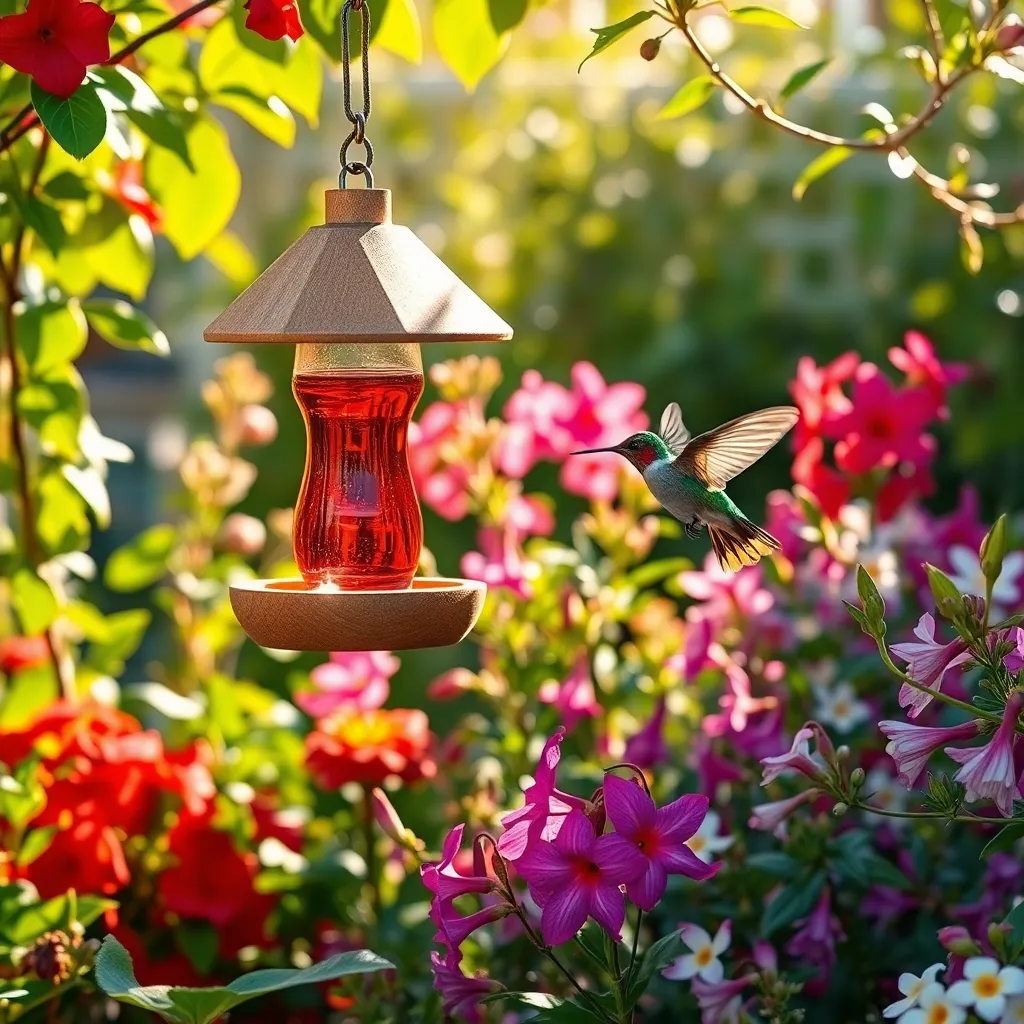
To naturally attract hummingbirds to your garden, consider planting a variety of native flowering plants. These plants should provide continuous blooms from spring to fall, ensuring a consistent food source for these delightful pollinators.
Especially effective are tubular, brightly colored flowers such as those in the red, orange, or pink spectrum. Hummingbirds are particularly drawn to plants like trumpet vine, bee balm, and salvia, which can thrive in well-draining soil with full sun exposure.
Incorporate a mix of flowering shrubs and perennials to create an inviting habitat. Ensure your garden has a few taller plants, like cardinal flower or red hot poker, which can serve as natural perches for the birds.
Water sources are also crucial, as hummingbirds enjoy bathing and drinking. A shallow bird bath with a gentle fountain can provide the necessary water while also adding a soothing element to your garden space.
Incorporating Water Features
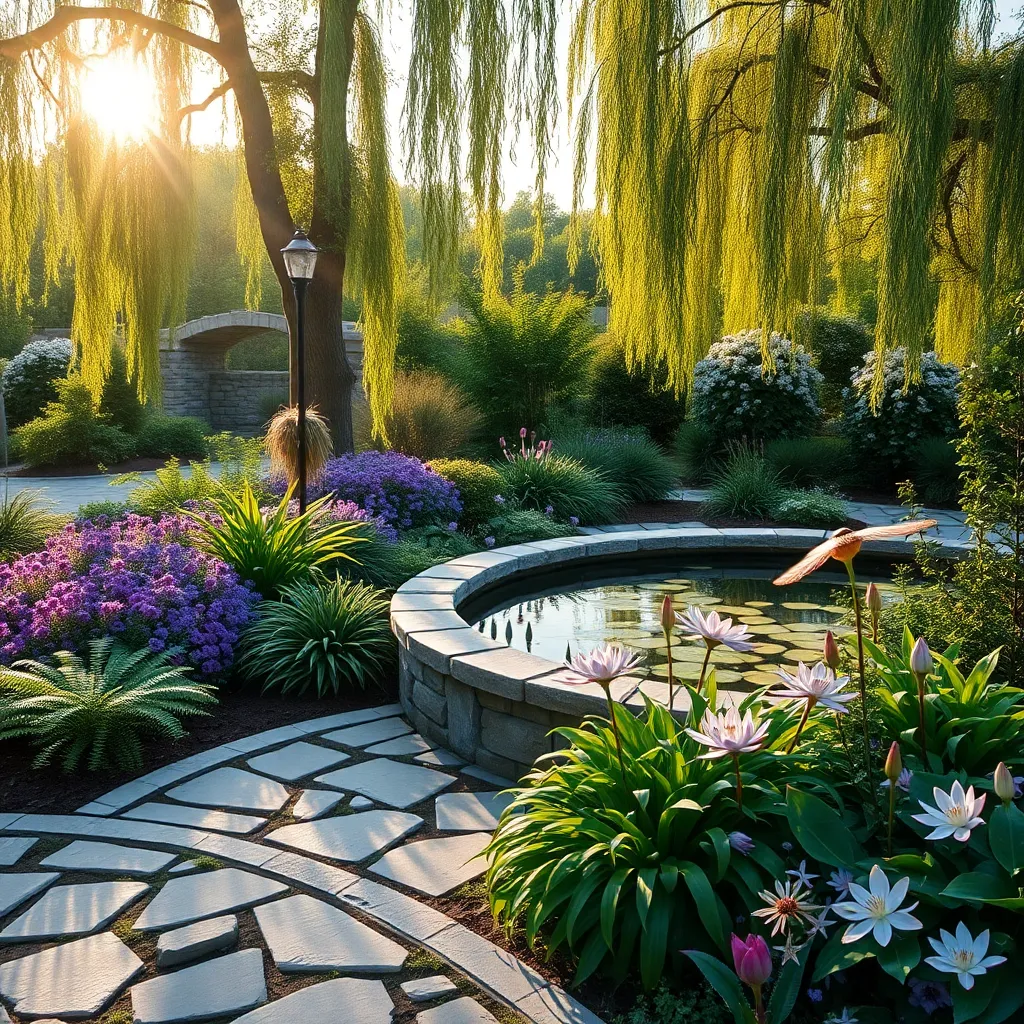
Introducing a water feature to your pollinator garden can significantly enhance its appeal and functionality. Water sources attract a variety of pollinators, including bees, butterflies, and birds, providing them with a necessary resource for survival.
Consider installing a small pond or a birdbath, ensuring it is accessible to all garden visitors. Maintain the water feature by keeping it clean and filled, as stagnant or dirty water can deter pollinators and attract pests.
For a more natural approach, you can design a shallow water basin with stones and pebbles. This setup allows insects, like bees, to land safely and drink without the risk of drowning, making it an ideal feature for your garden.
Advanced gardeners might explore incorporating aquatic plants that thrive in and around water features. Plants like water lilies or marsh marigolds not only beautify the area but also provide additional habitat and resources for pollinators.
Building Nesting Spaces
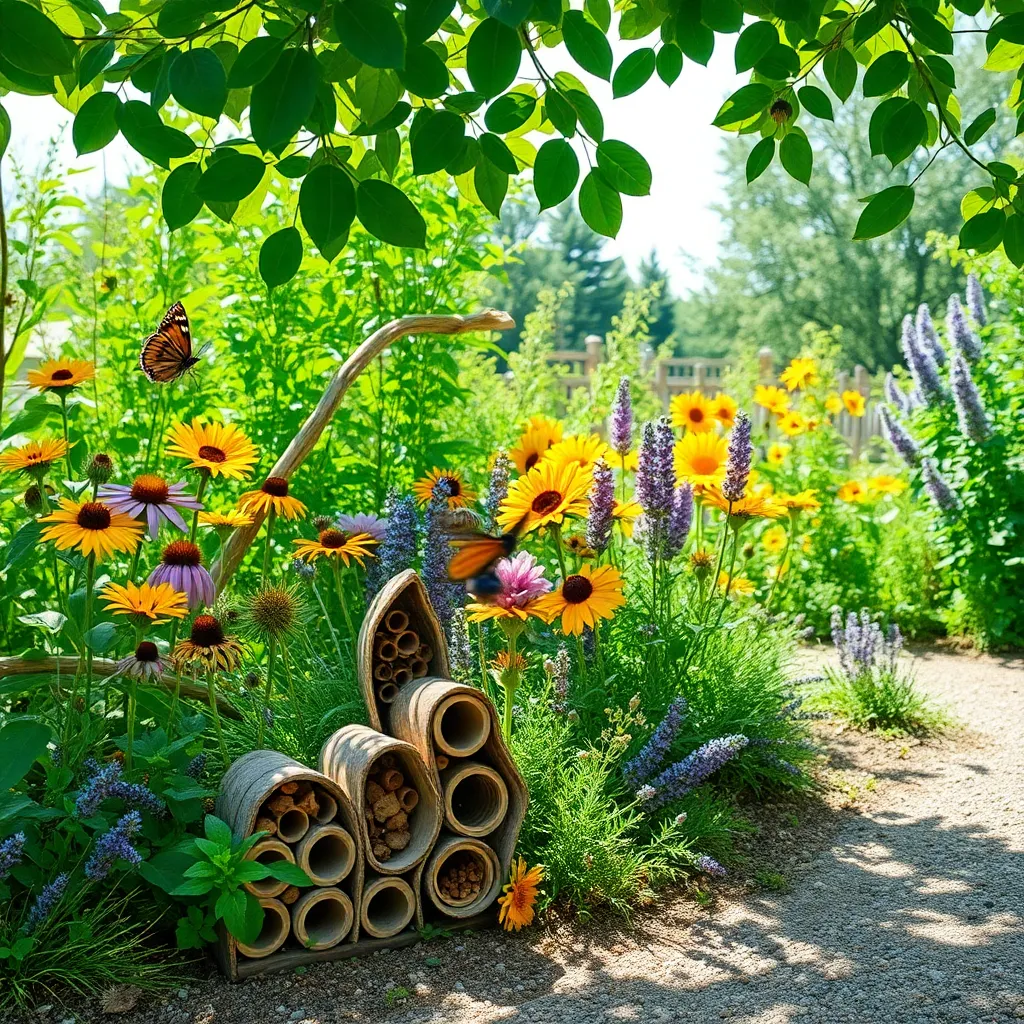
Creating nesting spaces for pollinators is essential for a thriving garden ecosystem. By providing diverse habitats, you support the lifecycle of bees, birds, and butterflies, enhancing your garden’s productivity.
Start by incorporating native plants, which offer the most suitable resources for local pollinators. Choose a variety of sizes and types to ensure continuous blooms and shelter throughout the seasons.
Consider adding a variety of nesting materials such as hollow reeds, untreated wood blocks with holes, or even mud patches for certain bees. These structures should be placed in a sunny, sheltered location to protect them from harsh weather.
For more advanced gardeners, creating a layered garden with trees, shrubs, and ground covers can mimic natural habitats. This complex environment offers various nesting options and protection, accommodating a wider range of pollinator species.
Integrating Herbal Pollinator Plants
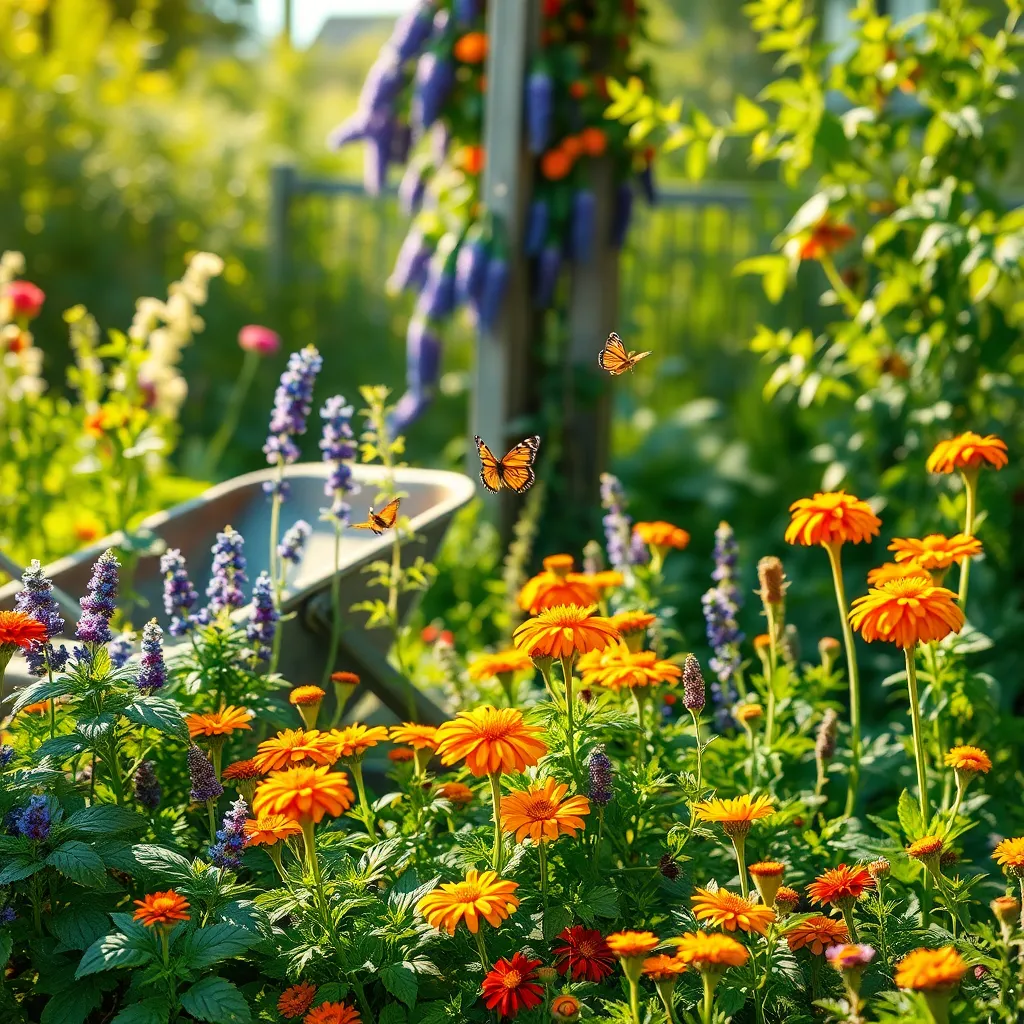
Integrating herbal pollinator plants into your garden not only attracts beneficial insects but also provides you with fresh herbs for culinary use. Start with herbs like lavender, oregano, and thyme, which are known for their aromatic flowers that bees and butterflies love.
Lavender requires well-drained soil and full sun to thrive, making it ideal for sunny spots in your garden. Water your lavender plants deeply but infrequently, allowing the soil to dry out between waterings to prevent root rot.
Oregano, a hardy perennial, is perfect for beginner gardeners due to its low maintenance requirements. Plant oregano in a location with full sun and well-drained soil, and watch it flourish with minimal care beyond occasional pruning to encourage bushier growth.
To maximize the pollinator benefits of thyme, consider planting it along pathways or in rock gardens where its creeping nature can be showcased. This herb prefers sandy, well-drained soil and should be watered moderately, allowing the soil to dry between waterings to ensure healthy plants.
Seasonal Planting Strategies
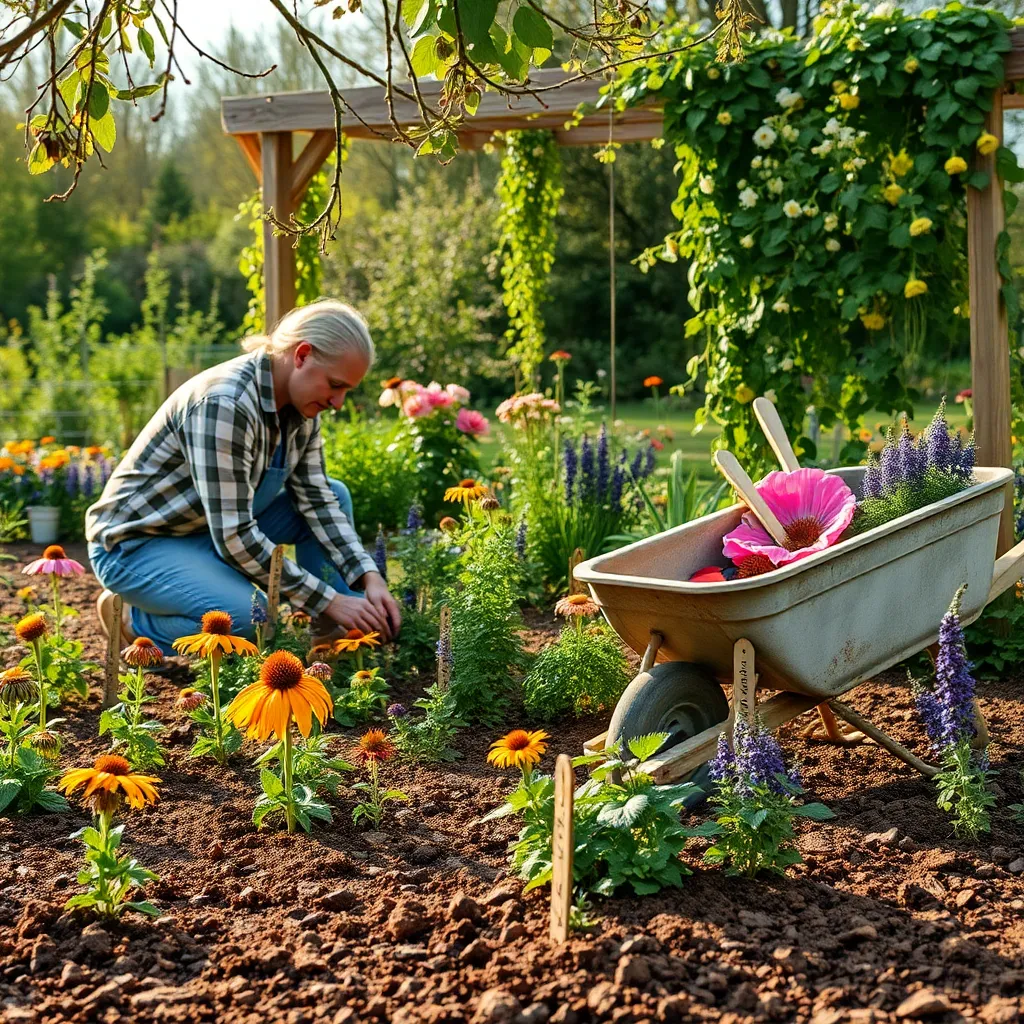
Understanding seasonal planting strategies can significantly enhance the success of your pollinator garden. By aligning your planting schedule with nature’s cycles, you can ensure your plants thrive and provide a consistent food source for pollinators.
One effective strategy is to select plants that bloom at different times throughout the growing season. This ensures that your garden provides a continuous supply of nectar and pollen, which is vital for attracting and supporting a diverse range of pollinators.
For beginners, choosing a variety of native plants is a simple yet powerful way to start. Native species are typically well-suited to local climates and require less maintenance, making them an excellent choice for those new to gardening.
Advanced gardeners might experiment with succession planting to maximize bloom periods. This involves planting multiple varieties at staggered times, so as one plant finishes blooming, another begins.
Soil preparation is crucial in seasonal planting strategies. Ensure your soil is well-drained and rich in organic matter, which can be achieved by incorporating compost or well-rotted manure before planting.
Watering practices should be adjusted according to the season and plant type. In general, most pollinator-friendly plants prefer a deep watering once a week, allowing the soil to dry out between waterings to prevent root rot.
- Consider mulching to retain moisture and regulate soil temperature.
- Use a balanced fertilizer during the growing season to support robust plant growth and blooming.
Layering Plant Heights Effectively
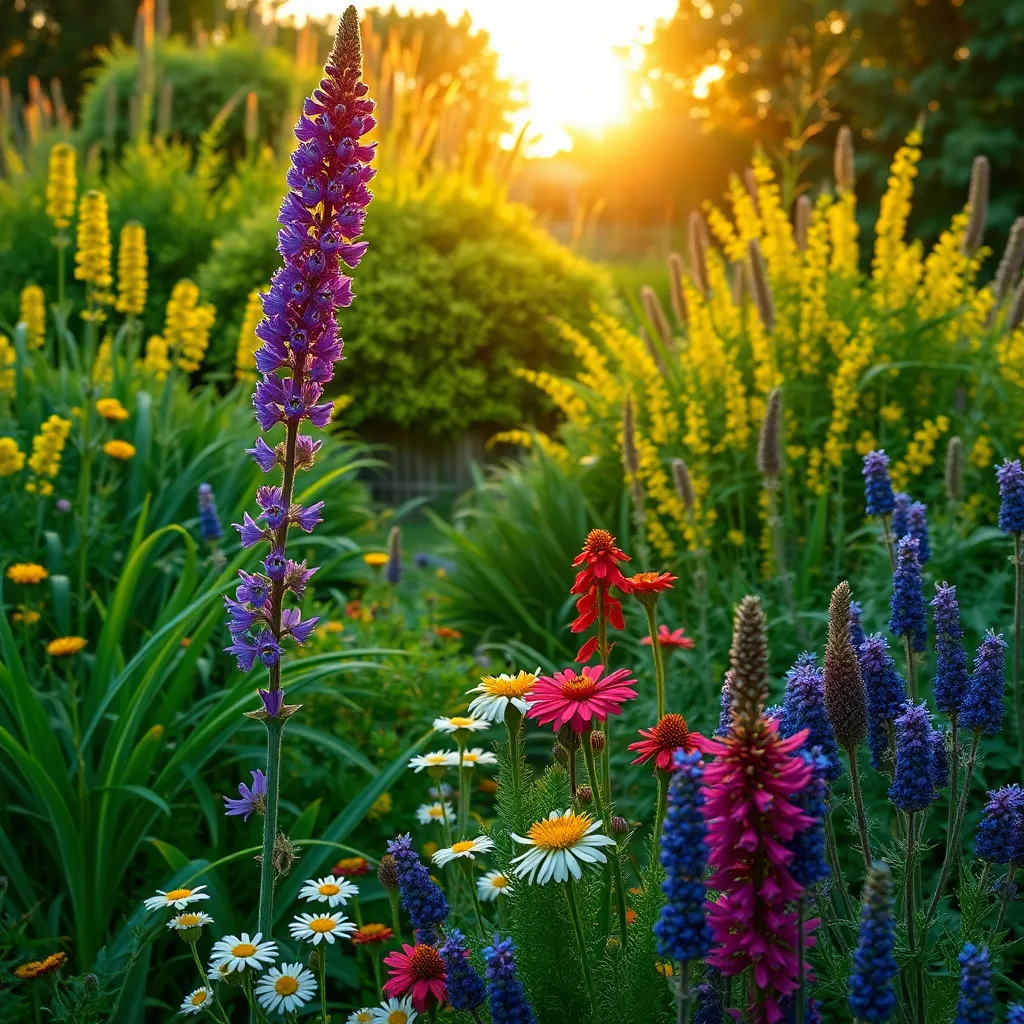
Layering plant heights effectively is a crucial strategy to create a vibrant, visually appealing pollinator garden. By arranging plants in varying heights, you can mimic natural ecosystems and provide a diverse range of habitats for pollinators.
Consider starting with tall plants like sunflowers or Joe-Pye weed at the back of your garden bed. These towering plants not only add structure but also offer a perch for butterflies and bees, while their deep roots help stabilize the soil.
In the middle layer, opt for medium-height plants such as coneflowers or salvias. These plants provide a burst of color and are known for attracting a wide range of pollinators, thriving best in well-drained soil and requiring moderate watering.
For the front, choose low-growing groundcovers like creeping thyme or sweet alyssum. These plants spread quickly, suppress weeds, and offer a carpet of blooms that draw in small pollinators like bees and hoverflies.
When layering, ensure each plant receives adequate sunlight and water by considering their specific needs. Regularly pruning and deadheading will maintain plant health and promote continuous blooming, enhancing your garden’s appeal to pollinators throughout the seasons.
Utilizing Color for Attraction
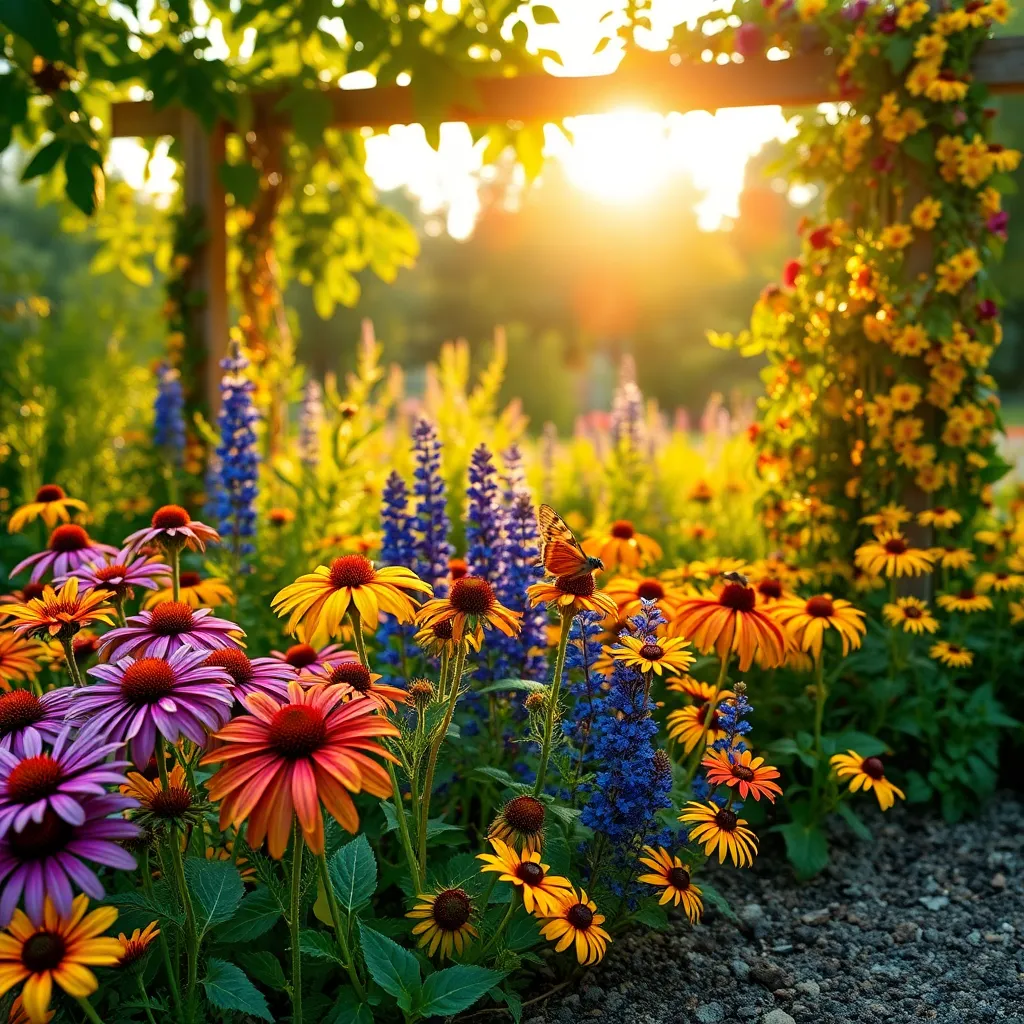
Color plays a crucial role in attracting pollinators to your garden, so it’s essential to choose your plants wisely. Bright blooms like reds, oranges, and yellows are particularly enticing to butterflies and hummingbirds, while bees are more attracted to blue and purple flowers.
Consider planting a mix of annuals and perennials to ensure a continuous display of color throughout the growing season. This not only keeps your garden vibrant but also provides a consistent food source for pollinators.
For beginners, marigolds and zinnias are excellent choices due to their bright hues and ease of care. Both thrive in well-drained soil and require regular watering, ideally once a week or more frequently during dry spells.
Experienced gardeners might explore planting a variety of native wildflowers, which are perfectly adapted to local conditions and highly attractive to native pollinators. Native plants often require less maintenance and can thrive with minimal intervention, making them a sustainable choice for your garden.
Sustainable Maintenance Practices
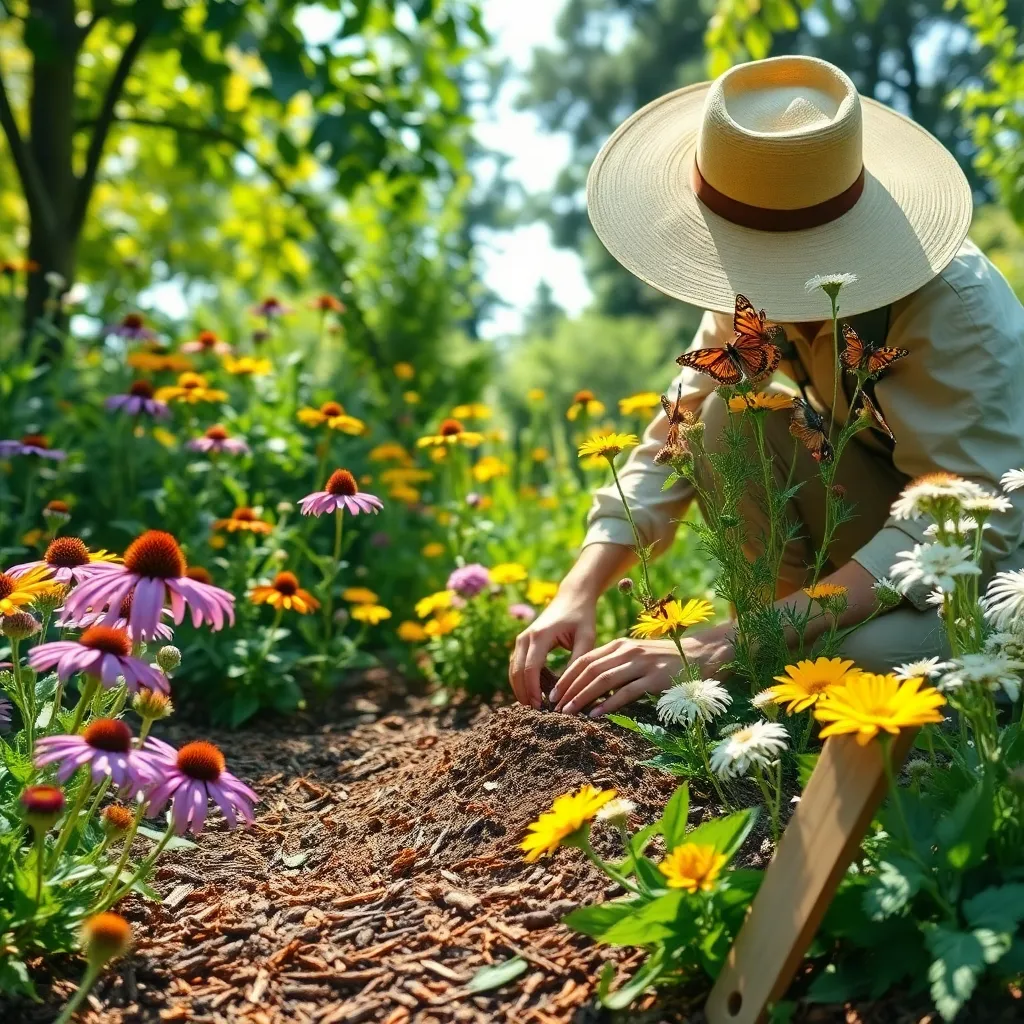
Incorporating sustainable maintenance practices into your pollinator garden can greatly enhance its health and longevity. Begin by using organic fertilizers, which not only promote plant growth but also support beneficial microorganisms in the soil, crucial for a thriving ecosystem.
Consider implementing a mulching strategy to retain moisture and suppress weeds naturally. Organic materials like wood chips or straw not only insulate the soil but also gradually decompose, enriching it with nutrients that help sustain plant health.
Water conservation is another critical aspect of sustainable garden maintenance. Install a rainwater collection system to capture and store water, reducing reliance on municipal sources and providing a sustainable water supply during dry spells.
To further support your garden’s sustainability, practice crop rotation and companion planting, which can help deter pests without chemicals. By alternating plant species and utilizing natural pest deterrents, you can maintain a balanced ecosystem that supports pollinators and other beneficial insects.
Finally, regular monitoring and gentle intervention will keep your garden thriving. Use natural remedies such as neem oil to manage pests, ensuring your garden remains a healthy, chemical-free zone that attracts and supports pollinators.
Monitoring and Enjoying Your Garden
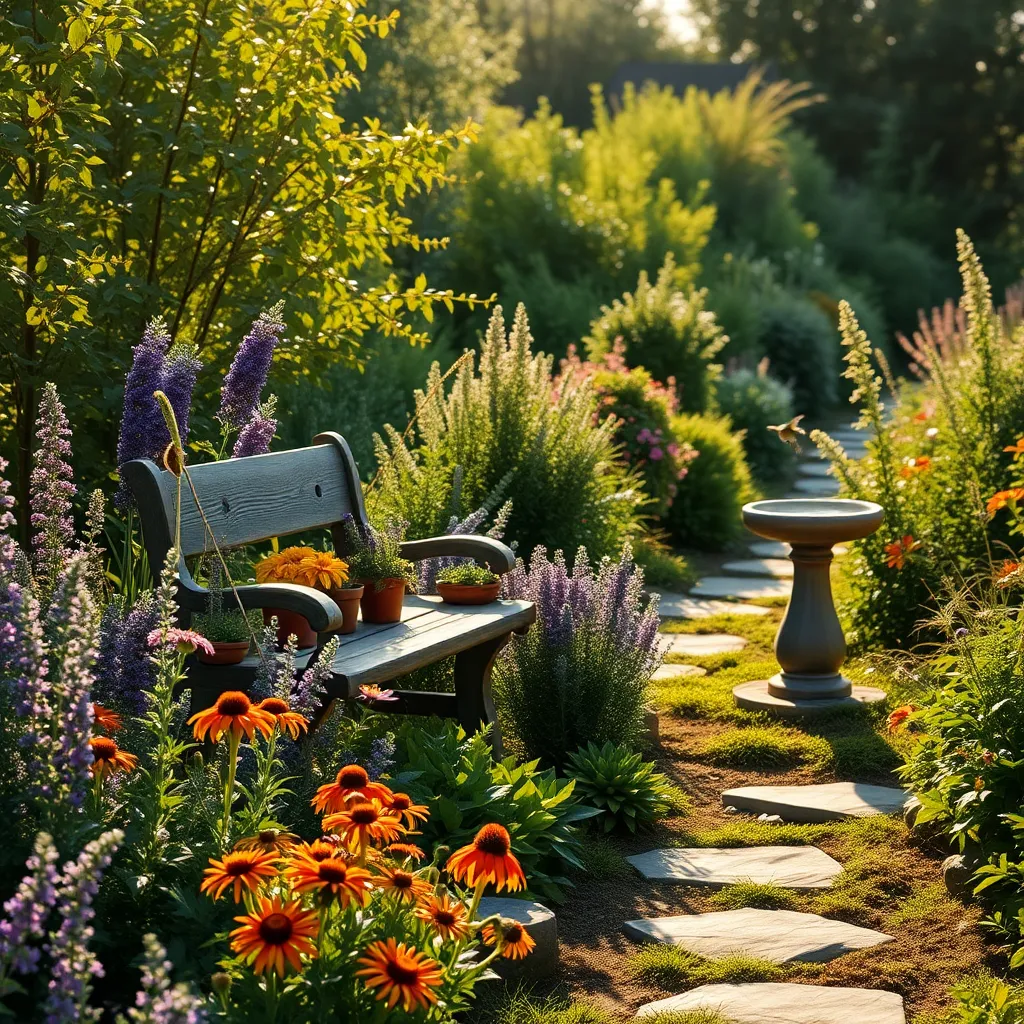
Monitoring your garden is a delightful way to ensure its health and vitality. Begin by regularly observing your plants to catch any signs of stress or disease early, which allows for timely intervention.
Check the moisture level of the soil by inserting your finger about an inch deep; if it feels dry, it’s time to water. Use a rain gauge to measure natural precipitation and adjust your watering schedule accordingly, ensuring your plants receive consistent hydration.
Encourage pollinators by planting a variety of flowering plants that bloom at different times throughout the season. Consider adding flowering herbs like lavender and basil, which not only attract bees but also provide culinary benefits.
For those with more gardening experience, implementing a simple data logging system can help track plant health and growth patterns. Use a garden journal or a digital app to record observations and changes, allowing you to refine your gardening techniques over time.
Enjoy the fruits of your labor by spending time in your garden, appreciating the sights and sounds of nature. Take moments to breathe deeply and relax, using your garden as a space for mindfulness and tranquility.
Conclusion: Growing Success with These Plants
As we delve into the vibrant world of pollinator gardens, we uncover 13 unique setups that beautifully parallel essential relationship concepts. From nurturing growth in sunny wildflower meadows to fostering resilience in shade-loving urban oases, each garden mirrors vital elements like communication, trust, adaptability, and patience. They remind us of the importance of creating a balanced environment, much like a diverse garden, where every relationship can flourish.
Now, it’s time to cultivate your personal relationship garden. Start by identifying one area that needs attention—a patch that could benefit from more sunlight or a touch of water. Whether it’s enhancing communication or adding a sprinkle of spontaneity, take that first step today.
Remember, just like any thriving garden, relationships require ongoing care and attention. Save this article as your go-to guide, a source of inspiration and a reminder of the diverse ways to nurture love and connection. Bookmark it now, so you have these insights at your fingertips whenever you need them.
Looking ahead, by continually tending to your relationship garden, you’re sowing seeds for a future filled with love, growth, and enduring success. Embrace this journey with joy and anticipation, knowing that every effort brings you closer to a blossoming partnership.

